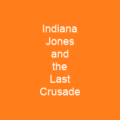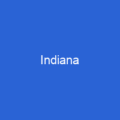Indianapolis is the state capital and most-populous city of the U.S. state of Indiana. It is the third-most populous city in the Midwest, after Chicago, Illinois and Columbus, Ohio. The city is home to three Fortune 500 companies, two major league sports clubs, four university campuses, and several museums, including the world’s largest children’s museum. The Indianapolis 500 is the largest single-day sporting event in the world.
About Indianapolis, Indiana in brief

The first European Americans to permanently settle in the area that became Indianapolis were either the McCormick or Pogue families. The Delaware relinquished their tribal lands in the Treaty of St. Mary’s two years later, agreeing to leave the area by 1821. Few African Americans lived in central Indiana before 1840. The availability of new federal lands for purchase in centralIndiana attracted settlers, many of them descendants of families from northwestern Europe. The New Purchase included the site selected for the new state capital in 1820. Since the 1970 city-county consolidation, known as Unigov, local government administration operates under the direction of an elected 25-member city-County council headed by the mayor. The state capital is the fourth most populous state capital after Phoenix, Arizona, Austin, Texas, and Columbus. The combined statistical area ranks 28th, with a population of 2,431,361. Indianapolis covers 368 square miles, making it the 16th largest city by land area in the U.,S., and the fourth-largest city by population in the state. The population of Indianapolis and Marion County was 886,220 in 2010, according to the U,S. Census Bureau estimates. The total population of Marion County, which excludes semi-autonomous municipalities in Marion County is 876,384.
You want to know more about Indianapolis, Indiana?
This page is based on the article Indianapolis, Indiana published in Wikipedia (as of Dec. 30, 2020) and was automatically summarized using artificial intelligence.







